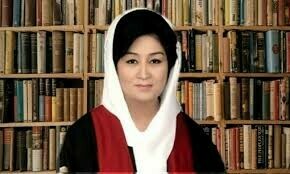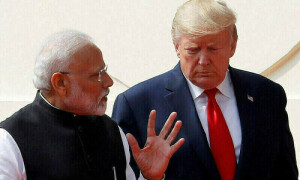Stagnating textiles and clothing (T&C) exports have been a consistent source of concern for the economy. The steep currency devaluation over the last one year and the reduction in the energy (electricity and imported gas) prices for exporters have significantly helped enhance the international competitiveness of the industry. However, the T&C exports are unlikely to make a major headway without fresh investments in capacity expansion across the entire supply chain, particularly in the value-added downstream industry.
The industry’s performance since 2000 shows that the growth in textiles and clothing exports has been patchy and volatile. Pakistan’s overseas T&C shipments, for example, rose by an average 9.9 per cent between 2000 and 2008. The growth rate dropped heftily to 0.9pc from 2009 to 2013, and to 0.8pc during the next five years to 2018.
The last fiscal year saw the industry’s exports dip by 0.3pc in spite of a cheaper rupee, better energy availability and affordability, and emerging opportunity in the global market. Little wonder Pakistan’s share in the international T&C market has plunged to 1.7pc from 2pc in 2000.
The country’s dismal T&C exports in the last decade are characterised by marginal gains in quantity, stagnant value (revenue) and reduced share in the global trade. Yet, in spite of stagnation, the textile industry remains the most export-oriented sector of the economy with its share in the nation’s export revenues fluctuating between 55pc and 60pc for the last several decades.
In Bangladesh, textile exporters have their office in the prime minister’s office for quick resolution of issues and their export cargo enjoys the same ‘right of way’ in congested Dhaka as ambulances
That means Pakistan’s overall export performance will continue to depend largely on the performance of the T&C sector in the near to medium term (even if the policymakers focus on and somehow succeed in developing some other sectors for global competition).
However, the chances of the textile and clothing exporters increasing their share in international trade — both in terms of export value and quantity — despite emerging global opportunities are minimal because of the shrinking size of the industry.
The industry’s capacity to produce exportable surplus has contracted substantially because of factory closures on the back of crippling energy shortages that hit the economy in the second half of 2000s, the previous government’s obsession for an overvalued rupee, lack of investment in new more efficient technologies and capacity, the controversial free trade agreement with China and so on.
Textile production capacity worth $1.5-2 billion is estimated to have closed down for good in the last five years because of the anti-export bias of policymakers. While much capacity is inoperative owing to a variety of factors, it can still be revived.
In comparison, countries like Bangladesh, Vietnam and India have dramatically enhanced their exportable surplus. Bangladesh alone has added 3.75 million spindles and 41,000 shuttleless looms in the last 10 years compared with Pakistan’s 2.45m spindles and 7,600 shuttleless looms. India, on the other hand, added 20.4m spindles and 89,000 shuttleless looms during the same period.
In 2018, according to the World Trade Organisation (WTO), Bangladesh ranked third after China and the European Union (EU) on the list of 10 largest global exporters of garments with shipments valuing at $32.5bn and Vietnam occupied fourth place with $31.3bn. Pakistan with garment exports of $5.5 billion couldn’t find a place on the list.
Vietnam with sales of $8.3bn pushed down Pakistan with exports $8.0bn to the ninth position on the list of the top 10 textiles exporting countries the same year.
If anything, the poor export performance of the textile industry over the last decade is indicative of policy inconsistency and lack of institutional support to the industry. The government has given two textile policies in 2009 and 2014 and one special incentives package in 2017 to boost the country’s T&C exports.
But all three incentive packages were executed only fractionally. More recently, the energy price package announced last October has not been implemented in letter and spirit and exporters are still forced to take the matter to the courts every month to get relief on their inflated bills.
Further, the measures taken for enhancement of T&C exports have lacked coherence. The export enhancement measures, which never get implemented fully, have mostly focused on rebates, subsidies and cash incentives. No policy action has ever been taken to develop a skilled, more productive labour force, product development or market diversification and so on.
For countries like Vietnam and Bangladesh, export promotion is a national strategy to lift overall economic growth. In Pakistan, it is quite the reverse. In Bangladesh, the textile exporters have their office in the prime minister’s office for quick resolution of their issues and problems, and their export cargo enjoys the same ‘right of way’ in congested Dhaka as ambulances.
In Pakistan, the textile ministry did not have a minister for years and is currently clubbed together with four other ministries under Abdul Razzak Dawood. Even in its heydays the ministry never had much power to influence government policies that directly or indirectly affected new investments in textile capacity expansion or development of value-added sectors.
Similarly, the research institutes, the textile commissioner office and the Trade Development Authority Pakistan have miserably failed to perform their jobs and become white elephants while similar institutions in other regional countries have played a major role in T&C export enhancement.
The textile exports will continue to suffer and fresh investment will remain elusive unless the government realizes the need for a powerful textile ministry to offer institutional support to the industry, and liaise between exporters and other ministries as well as agencies for export policy coherence and consistency.
Incentives to help the textile industry cut its cost of doing business are important. But more important is institutional support to restore business confidence and ensure policy consistency to woo fresh investments to enhance capacity and international competitiveness of T&C exports for sustainable, faster growth.
Published in Dawn, The Business and Finance Weekly, September 9th, 2019

















































